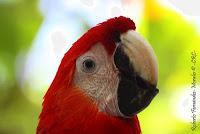
The Macaw Santuary is located in the small town of Aranjuez, in the province of Puntarenas.
El Manantial is a project dedicated to the conservation of macaws native to Costa Rica. The main focus of the project is the Scarlet Macaw (Ara macao) and the Great Green Macaw (Ara Ambigua), who once flew freely in many areas of Costa Rica. In 1994, individuals concerned with the status of these endangered species decided to create a project for their conservation; with the sole purpose of the project being the reintroducing of Macaws back into the wild, striving to increase their population numbers.
As a result of practices such as the destruction of habitat, logging of the Almendro de Montaña (Dipteryx panamensis) trees and the poaching of macaw chicks for sale in the pet trade, the specie’s population has become severely reduced. Both species are listed as endangered in Costa Rica, listed under Appendix I of CITES (the Convention on International Trade in Endangered Species).
At this moment in time there are estimated to be less than 40 breeding pairs of Great Green Macaws in all of Costa Rica. Although the Scarlet Macaw is more numerous, it is now only possible to see them in isolated parts of the country, with the largest population being in Carara National Park.
The Sanctuary operates under the supervision of the Ministry of the Environment Energy and Telecommunication (MINAET) and in accordance with the wildlife conservation laws of Costa Rica.
The primary goal of the project is the conservation of macaws native to Costa Rica. However El Manantial works on a variety of other programs. These are:1- Revegetation program.2- Environmetal education.3- Ecotourismo program.
It is important to mention the following: 1- The birds hatch to be free. At the Sanctuary, Great Green macaws and Scarlet macaws are not bred for the pet trade.They are strictly bred in order to release their young in to the wild to be set free forever. On the project the birds fly unrestricted, enjoying the trees and the fruits they can find around this habitat and eating clay on the ground.2- Aranjuez is an important Village for the liberation program; the people of this town are in charge of caring for and watching over the wild macaws.The people in Aranjuez are now understanding to appreciate nature more while learning at the same time that the macaws are more valuable being free than trapped inside a cage. 3- Scarlet Macaw (Ara macao). One of the most eye-catching and stunning birds of Costa Rica is the endangered Scarlet Macaw. This colorful parrot at one point had populated around 80% of Costa Rica, but their population has been diminished so greatly that they now only live in about 20% of the country. Its range of habitat includes dry, moist and wet tropical lowland forest, which depicts the vast range of habitat in which they are able to survive in.4- Great Green Macaw (Ara ambiguus). The ara ambiguus has a limited distribution in the Atlantic wet lowlands of Central America. In Costa Rica, this species is currently limited to the Northern Zone, more specifically to the area between the San Carlos, San Juan, and Sarapiquí rivers extending to the northern foothills of the Central Volcanoes Range. It highly depends on the almendro tree (Dipteryx panamensis) both for feeding and nesting substrate. This species is listed in Appendix I of CITES, which means that it is endangered. (Source: Macaw Santuary, available on January 2oth, 2012)
-----------------------------------Special gratitude to Mr. Oscar Ramírez Alán of the Ornithological Association of Costa Rica and Mr. Álvaro Herrera Villalobos of the INBIO for helping to identify some of the birds.
-----------------------------------Numbers in parenthesis refer to page number of the book “The Birds of Costa Rica”, by Richard Garrigues and Robert Dean (2007), where you can find a description of the bird.
-----------------------------------Click on the images to enlarge.
-----------------------------------El Santuario de Las Lapas se localiza en el pequeño pueblo de Aranjuez, en la provincia de Puntarenas.
El Manantial es un proyecto dedicado a la conservación de guacamayos nativos de Costa Rica. El objetivo principal del proyecto es la Guacamaya Roja (Ara macao) y el Gran Guacamayo Verde (Ara Ambigua), quien una vez voló libremente en muchas zonas de Costa Rica. En 1994, personas preocupadas por la situación de estas especies en peligro de extinción, decidieron crear un proyecto para su conservación. La finalidad del proyecto es la reintroducción de guacamayos a la vida salvaje, tratando de aumentar su número de población.
Como resultado de prácticas tales como la destrucción del hábitat, la tala de los árboles de almendro de montaña (Dipteryx panamensis) y la caza furtiva de pollitos de guacamayos en venta en el comercio de animales, la población de la especie se ha visto severamente reducida. Ambas especies están catalogadas como en peligro de extinción en Costa Rica, enumerados en el apéndice I del CITES (Convención sobre Comercio Internacional de Especies en Peligro de Extinción).
En este momento, se estima que existen menos de 40 parejas de gran guacamayas verdes en toda Costa Rica. Aunque el Guacamayo Rojo es más numeroso, ahora sólo es posible verlas en partes aisladas del país, con la mayor población están en el Parque Nacional Carara.
El santuario opera bajo la supervisión del Ministerio del ambiente energía y telecomunicaciones (MINAET) y de conformidad con las leyes de conservación de vida silvestre de Costa Rica.
El objetivo principal del proyecto es la conservación de guacamayos nativos de Costa Rica. Sin embargo, El Manantial trabaja sobre una variedad de otros programas. Estos son:1- Programa de revegetación.2- Educación ambiental.3- Programa de ecoturismo.
También es importante mencionar lo siguiente:1- Las aves nacen para ser libres. En el santuario, las guacamayas verdes y guacamayos rojas no son criados para el comercio de mascotas. Ellos son criados estrictamente para liberar sus crías en la naturaleza para ser libres para siempre.En el proyecto, se pueden apreciar sin restricciones el vuelo de las aves, disfrutando de los árboles y de los frutos que se pueden encontrar alrededor de este hábitat y comer arcilla sobre el terreno.2- Aranjuez es un pueblo importante del programa de liberación; la gente de este pueblo está a cargo de cuidar y vigilando los guacamayos salvajes.El pueblo de Aranjuez es ahora comprensión para apreciar la naturaleza más mientras se aprende al mismo tiempo que los guacamayos son más valiosos estando libres que atrapados dentro de una jaula. 3- Guacamaya roja (Ara macao). Es una de las aves más llamativas e impactantes de Costa Rica, el Guacamayo Rojo lamentablemente está en peligro de extinción. Esta colorida ave en un momento había poblado alrededor del 80% de Costa Rica, pero su población ha sido disminuido tan grandemente que ahora sólo viven en alrededor del 20% del país. Su gama de hábitat incluye bosques secos y húmedos de tierras bajas, que representa a la vasta gama de hábitat en el que son capaces de sobrevivir.4- Lapa verde (Ara ambiguo). El ambiguo ara tiene una distribución limitada en las llanuras húmedas del Atlántico de América Central. En Costa Rica, esta especie está actualmente limitada a la zona del Norte, más específicamente a la zona entre los ríos Sarapiquí, San Carlos y San Juan que se extiende hasta las estribaciones del norte de la Cordillera Central de los volcanes. Depende altamente del árbol de almendro (Dipteryx panamensis) tanto para la alimentación y anidación de sustrato. Esta especie figura en el apéndice I del CITES, lo que significa que está en peligro. Fuente: Macaw Santuary, disponible el 20 de enero del 2012.
-----------------------------------Un agradecimiento muy especial al señor Oscar Ramírez Alán de la Asociación Ornitológica de Costa Rica y al señor Álvaro Herrera Villalobos del INBIO por ayudarme a identificar algunas de las aves.
-----------------------------------Los números entre paréntesis se refieren a la página del libro “The Birds of Costa Rica”, de Richard Garrigues y Robert Dean (2007), en donde se puede encontrar mayor descripción del ave.
-----------------------------------Haga click sobre las imágenes para agrandarlas.
-----------------------------------Este es un mapa de como llegar al Santuario de Las Lapas. La siguiente dirección electrónica tiene un mapa detallado de Costa Rica (Mapa detallado Costa Rica, disponible el 15 de octubre del 2011).(This is a map of how to get to the Macaw Santuary. The link will take you to a detailed map of Costa Rica.)



Seguidamente se muestra la tabla de distancias entre San José y el Santuario de Las Lapas.(The following table shows the distances between San José and the Macaw Santuary.)

Fotografías tomadas antes de llegar al Santuario de Las Lapas. Se observa el típico paisaje del clima seco del Pacífico Central. (Photographs taken before reaching the Macaw Santuary. You can observe the tipical landscape of the dry climate of the Central Pacific.)
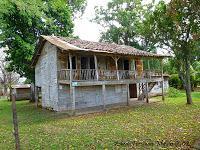
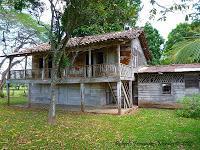
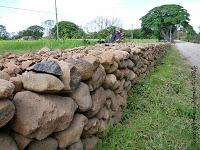
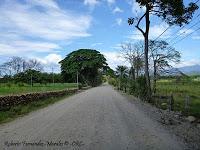
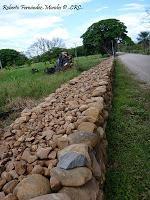

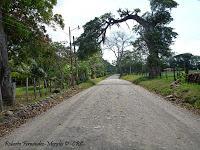
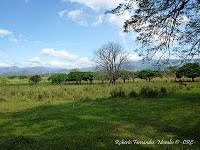
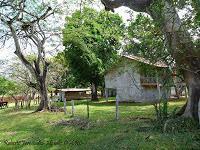
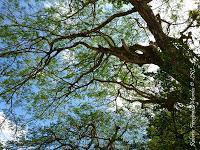
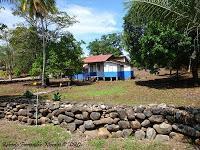

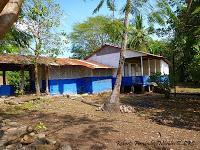
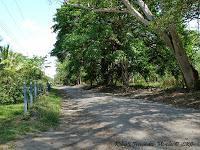
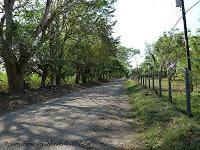
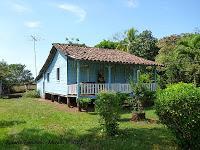
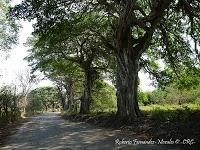
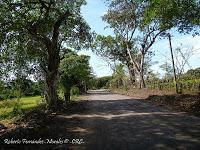
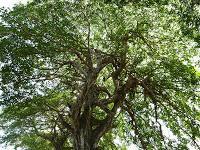

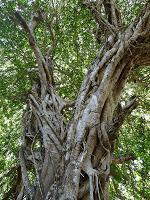
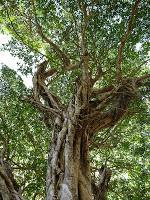
Aranjuez
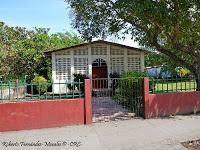
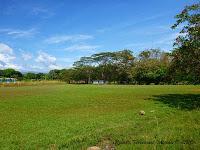
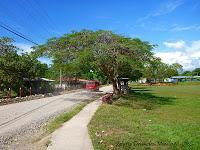
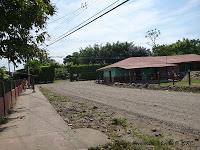
Santuario de Las Lapas(Macaw Santuary)
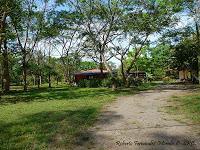
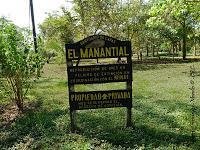
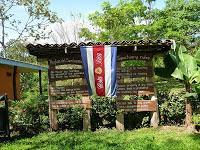
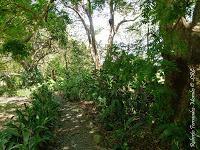
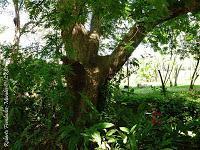
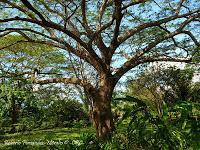
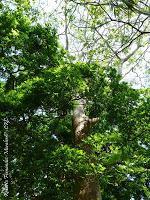
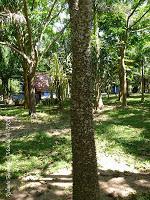

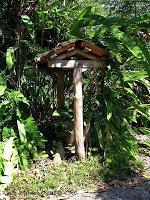
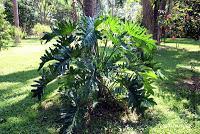
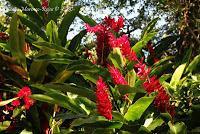
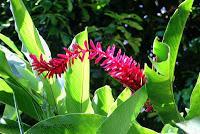
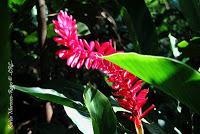

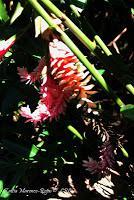
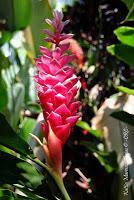

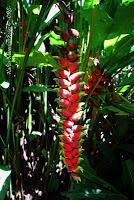
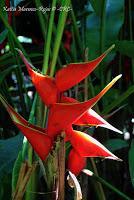
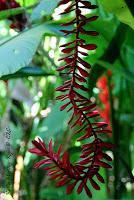
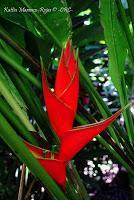
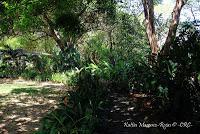

Nido artificial(Artificial nest)
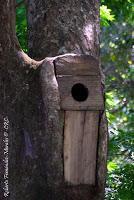
Árbol de achiote(Achiote tree)Arbusto grande que a veces alcanza el tamaño de un arbolito (5 metros o un poco más ). Es nativo de la región mesoamericana en donde ha sido ampliamente cultivado y aprovechado desde los albores de la historia por la sustancia grasosa y rojiza que se encuentra en el interior de sus frutos, la cual se ha utilizado hasta nuestros días para teñir de rojo las telas de algodón, para pintar la piel y el cuero, y para darle una apariencia más apetitosa a los alimentos, principalmente al arroz, a la yuca, al maíz y a la papa. Este arbolito posee una extraordinaria capacidad de sobrevivir y reponerse de los efectos dañinos de los incendios, herbicidas, colapsos, lesiones y ataques de plagas, motivo por el cual los campesinos e indígenas de América Central aseguran que el achiote nunca muere. Esto es especialmente cierto pues aunque durante mucho tiempo esta especie se dejó de reproducir y cultivar debido al desuso de su colorante rojo vegetal, recientemente ha resucitado como una de las más hermosas y ornamentales especies de plantas para zonas urbanas y residenciales, gracias a su atractivo follaje permanente en donde se combinan tonalidades rojas y verdes, a sus grandes flores de color lila y a sus llamativos frutos de color rojo encendido. (Fuente: Mundo Forestal, disponible el 20 de enero del 2012)(It is a large shrub which sometimes reaches the size of a tree (5 meters or slightly more). Native to the Mesoamerican region where it has been widely cultivated and used since the dawn of history and the reddish oily substance found inside the fruit, which has been used until today to dye cloth red cotton, to paint the skin and scalp, and to make more appetizing the food, mainly rice, yucca, corn and potatoes. This tree has an extraordinary ability to survive and recover from the damaging effects of fire, herbicides, crashes, injuries and pest attacks, which is why the peasants and indigenous Central American ensure that the achiote never dies. This is especially true because for a long time this specie is allowed to reproduce and grow due to disuse of red dye plant and recently has risen as one of the most beautiful and ornamental plant species for urban and residential areas, thanks to its attractive permanent foliage which combines red and green hues, its large purple flowers and its striking bright red fruits. Source: Mundo Forestal, available on January 20th, 2012.)
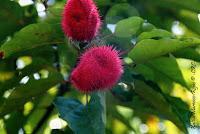
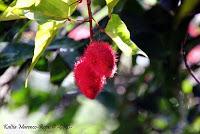
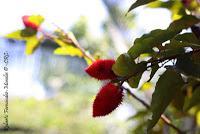
En el Santuario se encuentran otros animales aparte de las aves.(In the Santuary there are other animals besides the birds.)Mono tamarino(Tamarin monkey)

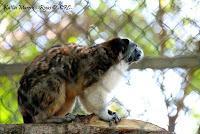 Oso perezoso de dos dedos
Oso perezoso de dos dedos(Two-toed sloth)
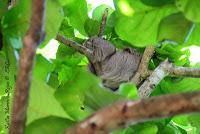
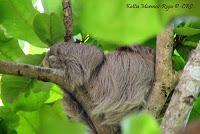 Tapir o danta(Baird's tapir)
Tapir o danta(Baird's tapir)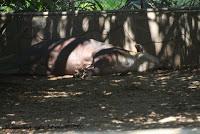
Aves(Birds)Algunas aves han sido traídas de Sur América(Some birds have been brought from South America)
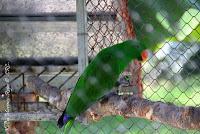



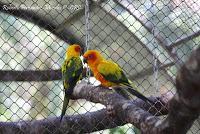

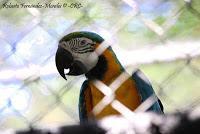
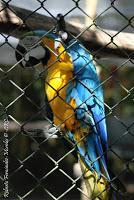
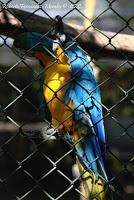 Guacamayo rojo (Lapa colorada o Lapa Roja) -Scarlet Macaw- (p 98)(Ara macao)Algunas de las aves permanecen en cautiverio, mientras se curan o anidan. Posteriormente son liberadas. Sin embargo, debido a que en la zona hay suficientes almendros, además de que el personal del Santuario las alimentan, es posible observan una gran cantidad de aves que se encuentran en los árboles del sitio. La vista de las aves es muy bella.(Some of the birds remain in captivity, while they heal or nest. Later they are released. However, because the area has sufficient almendro trees and the Sanctuary staff feeds them, you can observe a lot of birds in the trees of the site. The view of the birds is very beautiful.)
Guacamayo rojo (Lapa colorada o Lapa Roja) -Scarlet Macaw- (p 98)(Ara macao)Algunas de las aves permanecen en cautiverio, mientras se curan o anidan. Posteriormente son liberadas. Sin embargo, debido a que en la zona hay suficientes almendros, además de que el personal del Santuario las alimentan, es posible observan una gran cantidad de aves que se encuentran en los árboles del sitio. La vista de las aves es muy bella.(Some of the birds remain in captivity, while they heal or nest. Later they are released. However, because the area has sufficient almendro trees and the Sanctuary staff feeds them, you can observe a lot of birds in the trees of the site. The view of the birds is very beautiful.)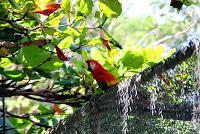
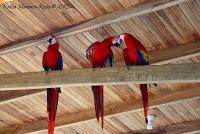
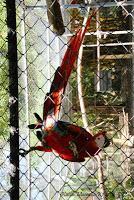
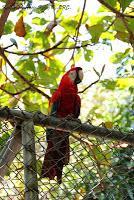
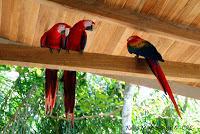
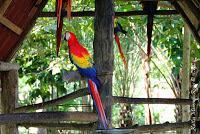
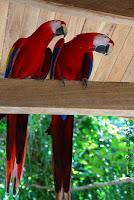
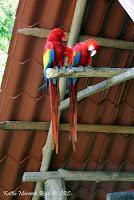
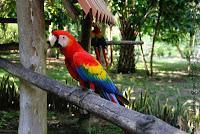
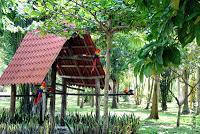
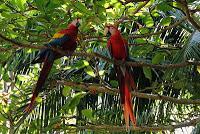
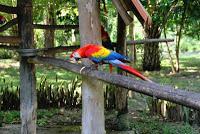
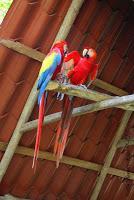
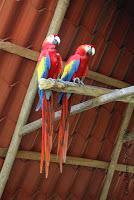
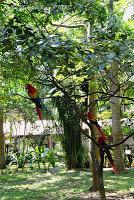
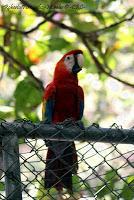

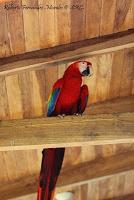
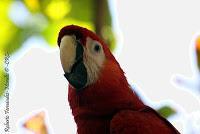
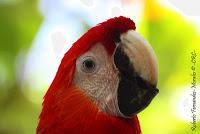
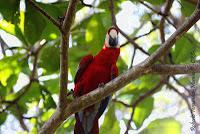
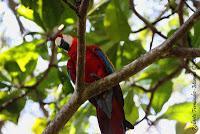
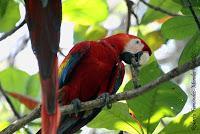
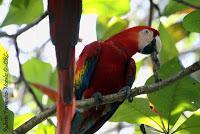
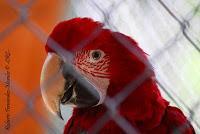
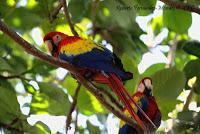
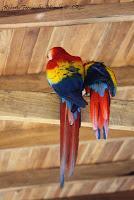
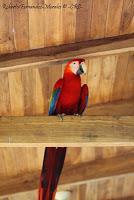
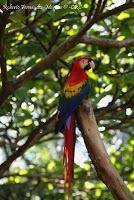
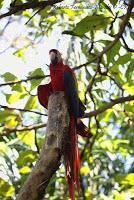
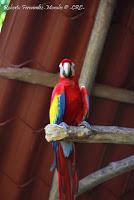

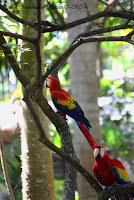
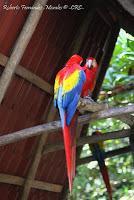
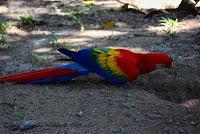
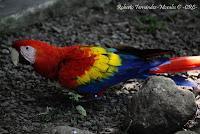
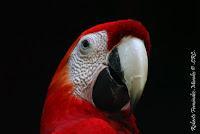
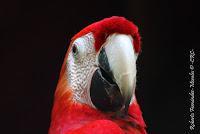
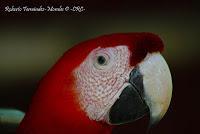
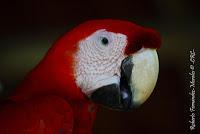
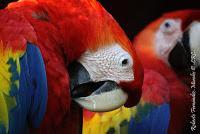
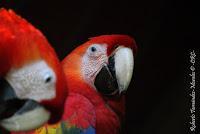 Guacamayo verde mayor (Lapa verde) -Great green macaw- (p 98) (Ara ambiguos)
Guacamayo verde mayor (Lapa verde) -Great green macaw- (p 98) (Ara ambiguos)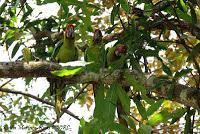
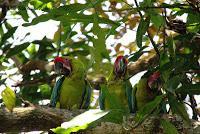
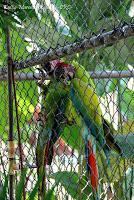
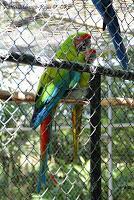
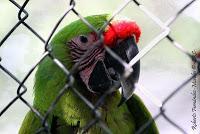

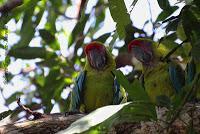
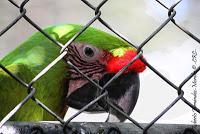

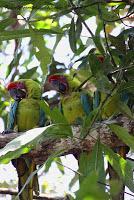
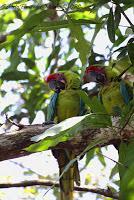
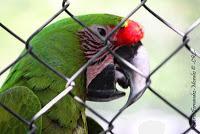
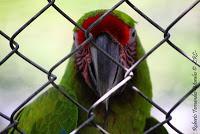

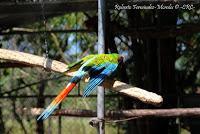 Perico frentinaranja –Orange fronted Parakeet- (p 94)(Aratinga canicularis)
Perico frentinaranja –Orange fronted Parakeet- (p 94)(Aratinga canicularis)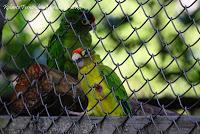 Tucán de Swainson (Quioro, Dios te dé ó Gran curré negro) –Chestnut mandibled Toucan- (p 154)(Ramphastos swainsonii)
Tucán de Swainson (Quioro, Dios te dé ó Gran curré negro) –Chestnut mandibled Toucan- (p 154)(Ramphastos swainsonii)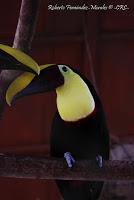
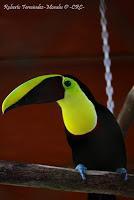
 Tucán pico iris (Curré negro) -Keel billed Toucan- (p 154)(Ramphastos sulfuratus)
Tucán pico iris (Curré negro) -Keel billed Toucan- (p 154)(Ramphastos sulfuratus)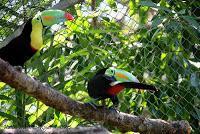
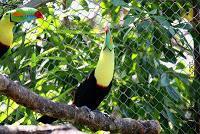
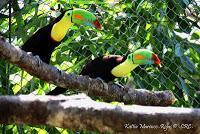
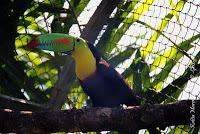

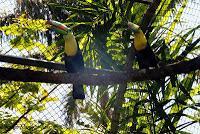
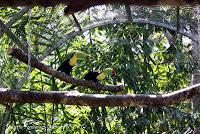
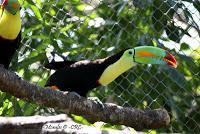
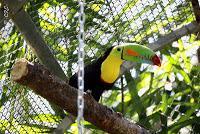
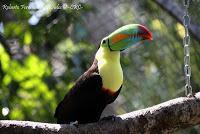
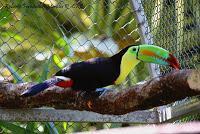
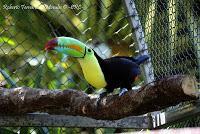
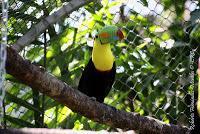 Tucancillo collarejo (Cusingo, Tití o Félix) –Collared Aracari- (p 154)(Pteroglossus torquatus)
Tucancillo collarejo (Cusingo, Tití o Félix) –Collared Aracari- (p 154)(Pteroglossus torquatus)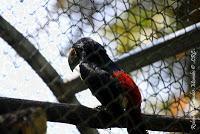

Conozca y cuide a Costa Rica. Es de todos nosotros!!(Get to know and take care of Costa Rica. It belongs to all of us!!)

